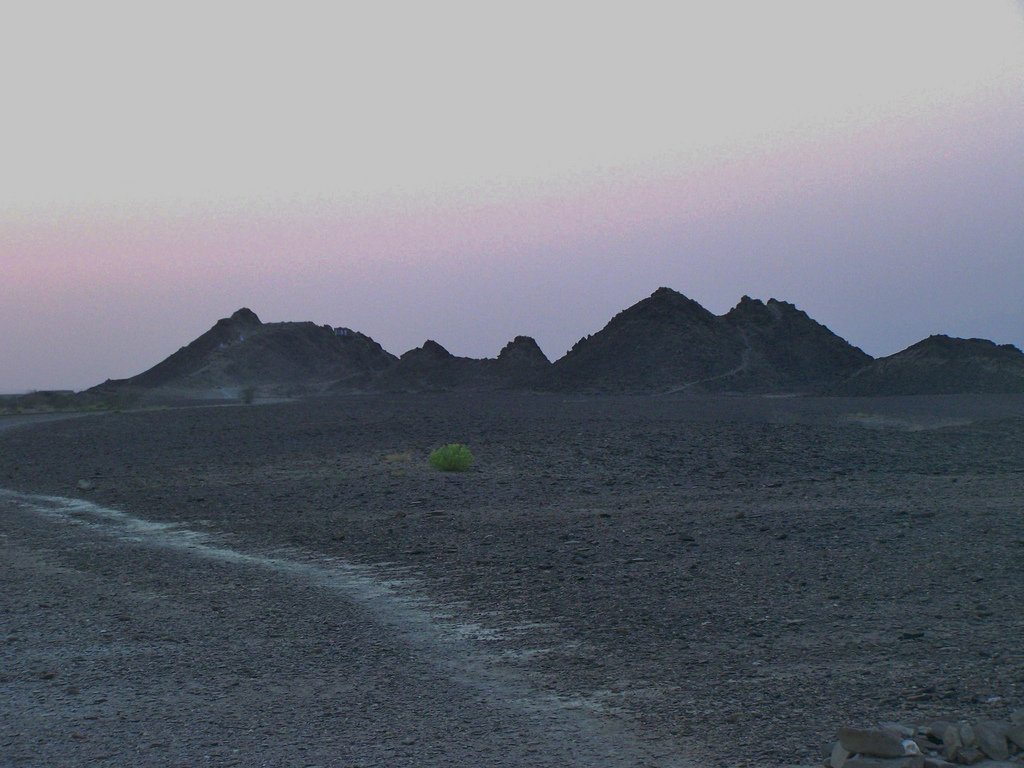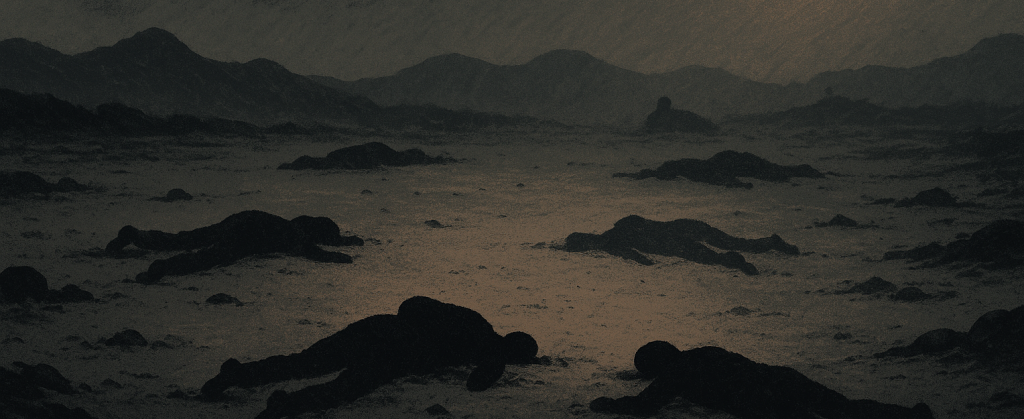“Barr e Kaheer has been set on fire,” a neighbor broke into our house, sweating from head to toe, to inform my mother.
The guy who brought the news had been long gone. Yet, my mom stood static like a statue with a look I had never seen on her face. It made me confused. Firstly, I didn’t know what had actually happened? Secondly, I didn’t know what to do. I couldn’t see the look on my face but I was still as my mom was.
Suddenly, she burst into tears. I, trembling with fear, rushed towards the door and kept running, not knowing where I was heading to.
Some people had tried to cut down and burn the big tree that we used to visit. In fact, they had almost cut down a quarter of it. It was I guess early 90s, and I was still a child. That day I knew I was a Zigri, and that not all the people in the neighborhood were.
“How come Gul Mahmad is not a Zigri and we are?” I asked.
“Because he doesn’t go to Ziarat and we do,” my mother replied.
“Why we do go to Ziarat?” I asked.
“Because we are Zigris,” she said, still upset.
“Who burnt the Barr e Kaheer and why?” I had innumerable questions.
“Because it is a Ziarat,” she choked.
I knew I had to stop, so I did.
Barr e Kaheer is a big prosopis cineraria tree in the middle of Turbat city of Balochistan and almost a kilometer away from my home. It’s sacred place for the Zigri sect. Although there isn’t an authentic history of the tree but most Zigris believe it to be their protector — a shield against the devil.
After that incident, people built a concrete wall to protect the remains of The Protector.
Another day, as I woke up from sleep I knew things weren’t in their usual order. When I opened my eyes there wasn’t anybody except me in the tent, which was unusual.
There was noise outside. At this time, the place was supposed to be quiet. But there was that strange yelling outside. In uncertainty, I put my shirt on and came out.
“Be-maat tu waab butage (You’ve been sleeping, your mother may die),” my mother shouted when she saw me.
Not only her, everybody was acting different and strange. A unique kind of jubilation was on. Overnight Baadshah had mysteriously become a different place.
It didn’t take long for the mystery to be unveiled. Baadshah had been attacked with rockets in the night. It happened not so long after the Barr E Kaheer incident. Perhaps, I was the only one who didn’t wake up that night to witness the flying rockets.
Koh E Murad, commonly called Ziarat e Sar, is also called Mukaam e Mahmood or Baadshah. It’s located approximately six kilometers from Turbat city. It is different in so many ways than the other sacred places of the Zigri sect.
Every year, in the month of Ramazan, most of the Zigris from all over Balochistan and Sindh visit this holy place. They don’t only visit, they do camp there. If the pilgrims are coming from Sindh, they would probably reach there on the 17th or 18th of Ramazan. If they are coming from a closer destination, they will delay their arrival. The last group of people reaching there are always from Turbat city.
The means of transport also vary, depending on the distance. Pilgrims coming from far mostly use buses, while other uses small vehicles. And there are always those orthodox Zigris who would walk from Pasni to Koh e Murad, approximately a distance of 120 kilometers.
And that famous group of bicycle riders from Karachi, who complete their over 700 kilometers journey on their two-wheelers. No matter what means of transport they use, one thing will always remain the same. Throughout the way, they keep singing chogaans, religious songs of Zigris.
One of the famous one goes like this:
Lead singer: man ame mulka nanindan dan hamdilen dostan nagindan
(I’ll not live at the place where I can’t see my beloved fellows)
Chorus: Hamdilen dostani jaga Turbat u Koh e Muraden
(The place for the beloved fellows is Turbat’s Koh e Murad)
From the first arrival of the first group of pilgrims, some young locals from Turbat will go and check their numbers. Every time, a group arrives, the locals would visit them. And then the elders of the sect began making comparisons. How many came last year by this time? How many the year before? The counting continues till the 24th or the 25th of the Islamic month.
It is hard to make an accurate estimate of the number of pilgrims every year, but they are in thousands. A minimum of 50,000.
The holy place, called Mohr, at the Ziarat is at a distance of around one kilometer from the camping site. The final prayers are made there.
No special arrangements are ever made for the camping. That group camped there last year, it’ll camp there this year too. There was never a quarrel about who will stay where. The extended families were allowed to erect their other tent next to the first one.
At a distance, kiosks are set up to sell everything you’d need during your stay. But even if you don’t cook, you will get enough food to eat. Every family that cooks for themselves must send a portion of it to three to four neighboring tents.
The most festive time is the dark of the night. All the pilgrims — old, young, men and women — will gather at a place called Chogaan e Jah, the place for singing religious songs. The jawaabis, members of the chorus, will make a circle and the Shaair (the lead singer), mostly a woman, stands in the center.
Others will sit on the rocky ground outside the circle to witness the religious singing. Some, in the deafening noise of chanting and singing, will discuss their domestic issues, from politics to literature. This goes on till dawn.
As the night progresses, the number of the participants decline. Some sleeps on the bare earth and some go to their tents.
I was among those who had gone to the tent that night, and missed the sight of flying rockets fired at the camp.
Everything changed after that night. For the first time, the pilgrims were to be escorted by the army on their return. Koh e Murad was the second sacred place for the Zigri sect which had been attacked shortly after Barr e Kaheer.
Although Koh e Murad covers a huge area and is visited by thousands of pilgrims every year, another sacred site Koh e Imaam, a small place, is believed to be holier. At least, my mother said if your prayers were heard by Imaam Jan you didn’t need to go anywhere else.
Nearer to the city, at a distance of around three kilometers, you didn’t need to wait for Ramazan to visit Koh e Imaam. One morning, you wake up and your mother tells you that you don’t have to go to school because “we are going to Imaam”.
The fun begins. All the participants, mostly women and kids, gather in front of a specific house. Everyone’s financial contribution is collected and from that money they would buy chicken, rice and all the other items required to make a meal.
The walk to Imaam begins. Two to three young men would lead, followed by women and then kids. And as they leave the neighborhood, they start singing chogaans.
dil mani garma nassagi
(I can’t bear the searing heat)
mana tambahe gwaate billagi
(I need some the air of Ziarat)
Like that, the distance of three kilometers in the baking heat of Turbat city, is covered in a blink of eye.
After reaching the site, most would rush for prayers at the Ziarat and as soon the prayers are finished, kids would dive into the site’s small lake. For me, the beauty of Imaam has always been its lake.
We would climb one of the mountains surrounding Imaam and dive into the lake from a height of around 20 meters. The fun would go on till someone would should that ‘the meal is ready’. After the meal, we’d return home.
Aadi man tai baahotan
(Aadi, take me in your protection)
Noor e madatta lotan
(I yearn for your help)
After a long absence, when I returned to Turbat in 2012, I wanted to visit Imaam.
“It is not that easy to get there as it was in old times,” my mother told me in an agonized tone.
“Why?” I inquired
“The Pakistan Navy has captured the all area and they are building a fence there and they won’t let anybody to visit Imaam anymore,” she said.
Navy in Turbat? They should find a coastline. I wanted to say but didn’t. She wouldn’t have understood.
Seth Halir is a UAE-based Balochi writer. He mainly writes short, satirical pieces. He also edits and shoots Balochi films.



